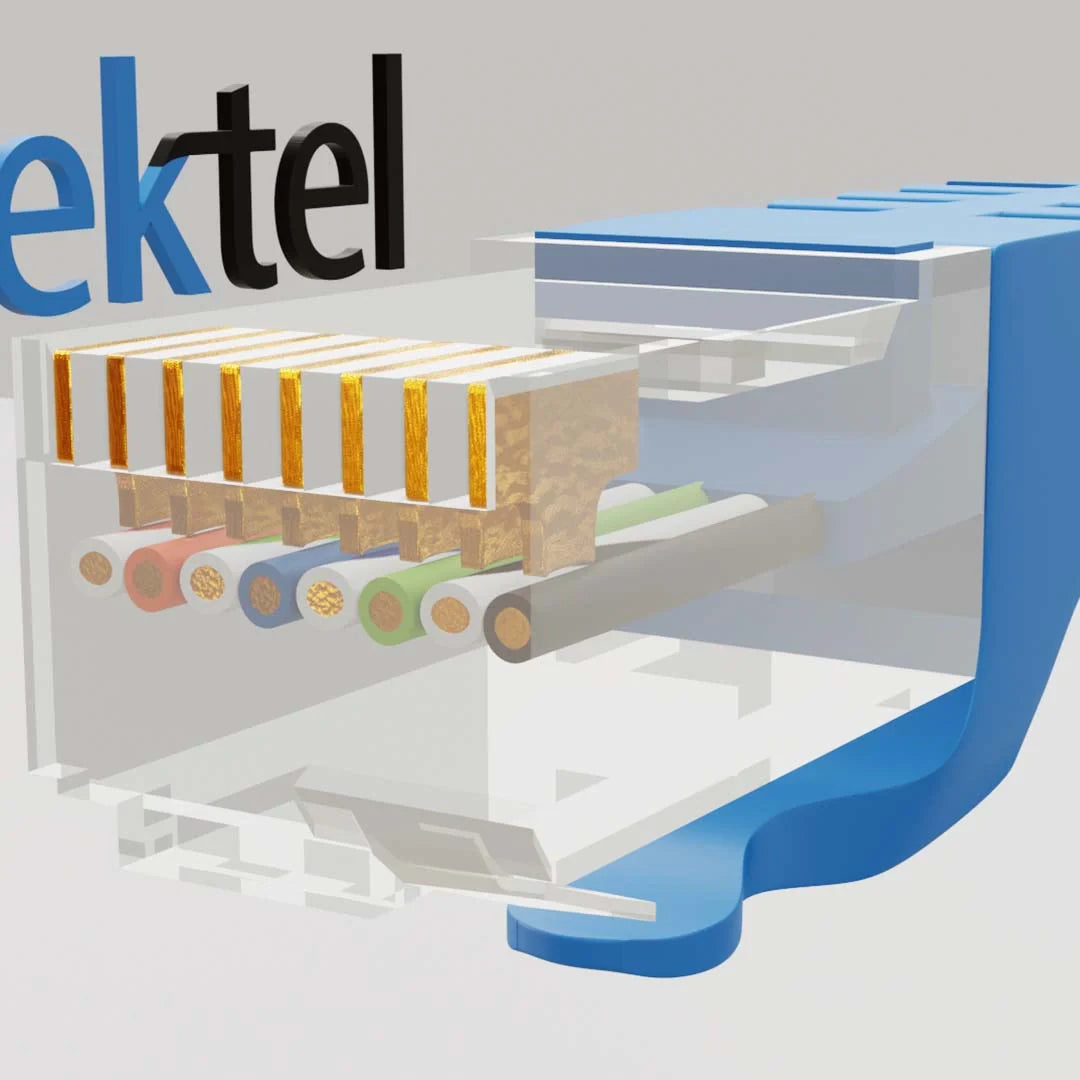You have no items in your shopping cart.

In today's digital world, we rely heavily on the internet and computer networks to stay connected with each other. One of the most important components of any network is the Ethernet cable, which enables devices to communicate with each other. When it comes to wiring an Ethernet cable, one of the most popular wiring schemes used is the 568B wiring scheme. In this article, we'll take a closer look at the basics of RJ45 wiring scheme 568B.
RJ45 wiring scheme 568B is a standard method for wiring Ethernet cables, which is widely used in commercial and residential networks. This wiring scheme defines the order of wires inside an Ethernet cable and how they are connected to the pins of an RJ45 connector. This ensures that devices can communicate with each other effectively, providing reliable and fast data transfer.
The RJ45 connector has eight pins, and each wire inside the Ethernet cable is connected to a specific pin. In the 568B wiring scheme, the pins are arranged as follows:
The RJ45 connector is widely employed in creating modular cables, allowing for ease of installation, maintenance, and scalability. These connectors are commonly used with twisted pair cables, where each wire in the cable serves a specific function in the data transmission process
The consistency provided by the 568B pin configuration is integral to the plug-and-play nature of RJ45 connectors, allowing for seamless integration into various networking environments.
One notable aspect of the 568B wiring scheme is its cross-compatibility with the T568A standard. T568A is an alternative wiring scheme that differs in the arrangement of wire colors within the RJ45 connector. However, the beauty of the 568B scheme lies in its ability to maintain connectivity even when one end of a cable follows the T568A standard and the other end adheres to T568B.
This flexibility simplifies installations where different wiring schemes might coexist, providing a degree of adaptability in scenarios where devices follow different standards.
The development of RJ45 wiring schemes was driven by the growing demand for standardized network cabling solutions. Before the establishment of 568A and 568B, various proprietary wiring schemes were prevalent, leading to confusion and interoperability issues. In response, TIA/EIA defined the 568A and 568B standards in the early 1990s to bring clarity to the industry.
Initially, the 568A and 568B wiring schemes were developed independently by two different organizations – AT&T (568A) and IBM (568B). However, in an effort to promote consistency, TIA/EIA later merged the two schemes into one standard, allowing installers to choose either 568A or 568B for their installations. Eventually, the industry gravitated towards 568B as the preferred choice for new installations, though 568A is still used in some specific applications.
The 568B wiring scheme offers several advantages that have contributed to its widespread adoption:
Compatibility: The 568B standard is backward compatible with older 10BASE-T and 100BASE-TX Ethernet standards, making it versatile for various network environments.
Universal Usage: 568B has become the de facto standard for RJ45 Ethernet installations worldwide, promoting consistency and simplifying network design.
Straight-Through and Crossover Cables: The 568B scheme allows for the creation of both straight-through and crossover cables, offering flexibility in establishing different connections.
Interchangeability: Since both 568A and 568B standards are part of the same TIA/EIA-568 standard, they are interchangeable as long as the same scheme is used on both ends of the connection.
Creating Ethernet cables using the 568B wiring scheme is a straightforward process. Here's a step-by-step guide:
Gather the required tools and materials: Ethernet cable, RJ45 connectors, crimping tool, wire stripper, and cable tester.
Strip the cable jacket: Use the wire stripper to remove about an inch of the outer jacket from the cable, exposing the eight individual wires.
Arrange the wires: Align the wires according to the 568B scheme, ensuring that they follow the color order for each pair.
Trim the wires: Cut the wires to an even length, leaving enough room for the connector to fit securely.
Insert the wires into the connector: Carefully push the wires into the RJ45 connector, making sure they reach the end of the connector.
Crimp the connector: Use the crimping tool to secure the wires in place. Ensure that the connector is firmly attached to the cable.
Test the cable: Verify the integrity of the newly crimped cable using a cable tester to confirm proper connectivity.
The RJ45 wiring scheme 568B is predominantly used in Ethernet networks for various applications, such as:
Local Area Networks (LANs): 568B-compliant cables are widely used in office and home LANs to connect computers, printers, routers, and other networking devices.
Data Centers: Data centers often employ 568B standard cables for server connections and rack-to-rack
Communication/Telecommunications: Telephone systems that utilize Ethernet technology, such as VoIP phones, often rely on 568B wiring for efficient data transmission.
Industrial Automation: Industrial Ethernet applications in factories and automation systems commonly use 568B-compliant cables.
RJ45 wiring scheme 568B is a standard method for wiring Ethernet cables, which ensures reliable and fast data transfer between devices. It is important to use the correct wiring scheme when wiring Ethernet cables, as using the wrong scheme can result in poor connectivity and slow data transfer speeds. By following the steps outlined in this article, you can wire Ethernet cables using the 568B wiring scheme with ease.
The RJ45 wiring scheme 568B has become the prevailing standard for Ethernet installations worldwide. Its compatibility, universal usage, and versatility make it an excellent choice for various networking applications. By adhering to the 568B standard, network installers can ensure seamless connectivity and communication, promoting efficiency and reliability in modern data networks. Understanding and implementing the 568B wiring scheme is a crucial skill for network professionals, enabling them to build robust and efficient Ethernet connections.
